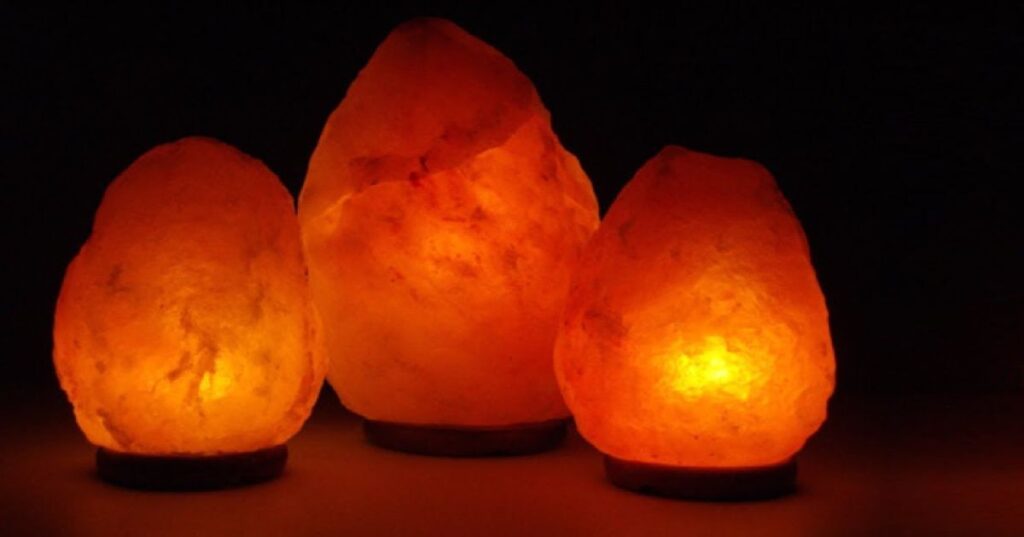Salt lamps have become popular in homes everywhere. You know, those beautiful chunks of salt that emit a warm and cozy glow when lit up. Not only are they aesthetically pleasing, but they’re also believed to have some incredible health benefits, like purifying the air and improving sleep. However, there’s a burning question on everyone’s minds: Can salt lamps cause headaches?
Some individuals have reported experiencing headaches or migraines after being in the presence of salt lamps for an extended period. This has sparked an ongoing debate surrounding the true effects of these captivating lamps.
In this article, we’re diving headfirst into the captivating world of salt lamps to uncover the truth about their impact on our well-being. We’ll explore scientific research, consult experts, and separate the facts from the fiction.
Is It Safe to Sleep Next to a Salt Lamp?
Sleeping next to a salt lamp is generally safe. The soft glow and gentle aroma can create a cozy ambiance without significant risks. Salt lamps operate at low wattage, providing a gentle, twilight-like glow that shouldn’t disturb your sleep. They release small amounts of salt vapor, creating a subtle, oceanic scent. For most people, these particles are harmless to breathe in. However, individuals with respiratory sensitivities or existing conditions should exercise caution.
When purchasing a salt lamp, choose reputable sources, prioritizing quality and adhering to strict standards. This ensures the lamp is free from contaminants like heavy metals that could harm your health.

Can Salt Lamps Cause Headaches?
Salt lamps are fascinating pieces of décor that emit a warm, soothing glow while claiming to offer various health benefits. Made from Himalayan salt, these lamps have a unique composition that sets them apart. When the lamp is switched on, the heat from the light bulb causes the salt crystals to attract moisture from the air through hygroscopy. This moisture forms a bond with the salt, enabling the lamp to perform its magic.
The heated salt crystals release negative ions into the air, which are believed to have a positive impact on mood, concentration, and stress levels. Additionally, as the water molecules evaporate due to the heat, any impurities or allergens in the air get trapped within the salt structure, resulting in a potentially cleaner and fresher environment. While scientific research is ongoing to support these claims, many people have reported experiencing a sense of tranquility and rejuvenation in the presence of salt lamps.
Common Causes of Salt Lamp Headaches?
The causes of salt lamp-induced headaches are multifaceted. Factors such as ionization, electromagnetic radiation, salt quality, individual sensitivities, and even psychological influences can all contribute to these headaches. Let us explore some common causes of salt lamp headaches:
- One possible reason for salt lamp-induced headaches lies in the process of ionization. As the lamp warms up, it releases negative ions into the environment. While negative ions are generally considered beneficial, some individuals might be sensitive to high concentrations, leading to headaches.
- Another factor to consider is electromagnetic radiation. Although salt lamps emit low levels of electromagnetic radiation, it’s worth noting that some people may be more sensitive to its effects. This increased sensitivity could result in headaches and discomfort.
- The quality of the salt used in these lamps is also essential. Authentic Himalayan salt, known for its purity and rich mineral content, is preferred. However, low-quality salts may contain impurities or contaminants that could trigger adverse reactions in sensitive individuals, causing headaches or other discomforts.
- Furthermore, individual variations in sensitivity play a significant role. Some people may have heightened sensitivity to changes in air quality or the presence of allergens. When salt lamps are heated, microscopic particles like dust or allergens may be released, potentially worsening sensitivities and leading to headaches.
- Lastly, let’s remember the power of our minds. The placebo effect may also contribute to reported headaches. When people are aware of the potential side effects associated with salt lamps, their expectations, and psychological perception can sometimes manifest as physical symptoms, including headaches.
Sensitivity to certain elements in salt lamps
The sensitivity to specific elements in salt lamps reminds us of the intricate relationship between humans and their surroundings. Although the precise causes of this sensitivity are not fully understood, they are thought to have something to do with trace mineral release and its effects on the respiratory system.
When sensitive individuals are exposed to these elements, they may experience respiratory discomfort, skin irritation, or worsening of existing conditions. It is crucial for those who suspect sensitivity to exercise caution when incorporating salt lamps into their living spaces. Consulting healthcare professionals such as allergists or pulmonologists can provide valuable guidance in understanding potential risk factors and managing the situation. The sensitivity to specific elements in salt lamps underscores the diverse reactions humans can have to environmental stimuli.
Alternatives to Salt Lamps for Unique Illumination
- Crystal Beacons: Ethereal creations from vibrant gemstones cast a mesmerizing glow that brings the natural world into your living spaces. These enchanting “crystal beacons” captivate with their radiant dance of refracted light, creating a captivating ambiance that elevates your surroundings to new heights.
- Himalayan Glow Orbs: Himalayan glow orbs luminaries exude a serene, soft illumination. With their delicate hues and organic textures, they infuse any room with a sense of tranquility and wonder, turning ordinary spaces into enchanting sanctuaries.
- Aromatic Illuminators: Aromatic illuminators combine the art of illumination with the captivating aromas of essential oils. Within their delicate frames, fragrant mists intermingle with a gentle glow, creating a sensory symphony that envelops your space, soothing your eyes and soul.
- Plasma Orbs: Plasma orbs harness the raw power of electricity, transforming it into a spellbinding display of ethereal arcs and captivating light. Their incandescent dance, reminiscent of lightning’s raw energy, brings an otherworldly ambiance to any room, leaving onlookers transfixed by their mesmerizing glow.
- Bioluminescent Delights: Bioluminescent Delight emits a soft, enchanting luminescence that transcends the boundaries of ordinary lighting. With their soft glow, they fuse art and science, reminding us of the beauty and ingenuity found in the natural world.
Conclusion
Whether salt lamps can cause headaches remains a subject of debate. While some individuals have reported experiencing headaches or migraines after prolonged exposure to salt lamps, the causes of these headaches are likely multifaceted. Factors such as ionization, electromagnetic radiation, salt quality, individual sensitivities, and psychological influences can all contribute to these headaches. Individuals with respiratory sensitivities or existing conditions must exercise caution when using salt lamps.
Furthermore, the placebo effect and the power of expectations and psychological perception may also play a role in reported headaches. Overall, further scientific research is needed to understand salt lamps’ effects on human health. For those who suspect sensitivity or experience discomfort, exploring alternative options for unique illumination may be worthwhile.



